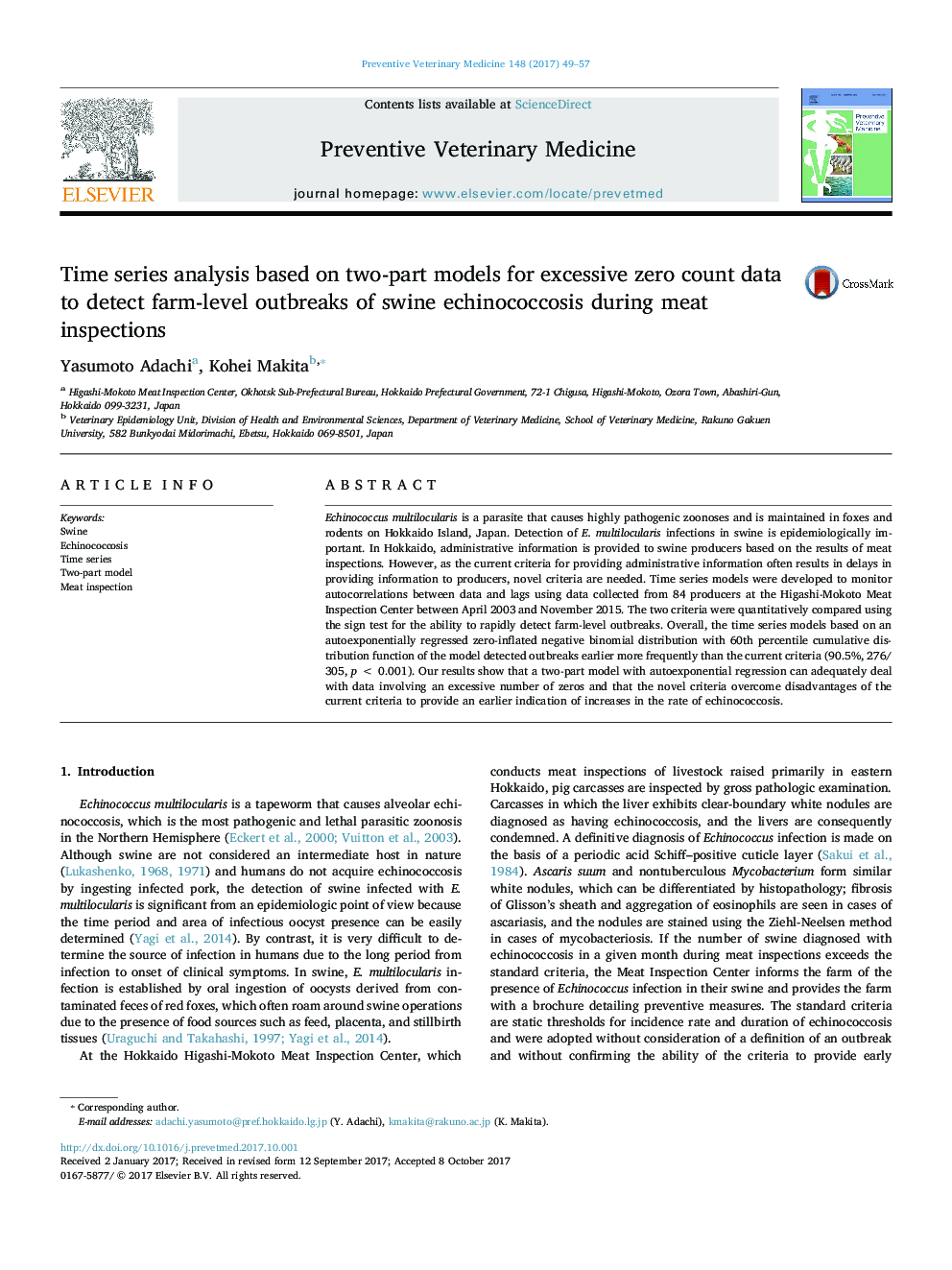| Article ID | Journal | Published Year | Pages | File Type |
|---|---|---|---|---|
| 8503624 | Preventive Veterinary Medicine | 2017 | 9 Pages |
Abstract
Echinococcus multilocularis is a parasite that causes highly pathogenic zoonoses and is maintained in foxes and rodents on Hokkaido Island, Japan. Detection of E. multilocularis infections in swine is epidemiologically important. In Hokkaido, administrative information is provided to swine producers based on the results of meat inspections. However, as the current criteria for providing administrative information often results in delays in providing information to producers, novel criteria are needed. Time series models were developed to monitor autocorrelations between data and lags using data collected from 84 producers at the Higashi-Mokoto Meat Inspection Center between April 2003 and November 2015. The two criteria were quantitatively compared using the sign test for the ability to rapidly detect farm-level outbreaks. Overall, the time series models based on an autoexponentially regressed zero-inflated negative binomial distribution with 60th percentile cumulative distribution function of the model detected outbreaks earlier more frequently than the current criteria (90.5%, 276/305, p < 0.001). Our results show that a two-part model with autoexponential regression can adequately deal with data involving an excessive number of zeros and that the novel criteria overcome disadvantages of the current criteria to provide an earlier indication of increases in the rate of echinococcosis.
Related Topics
Life Sciences
Agricultural and Biological Sciences
Animal Science and Zoology
Authors
Yasumoto Adachi, Kohei Makita,
